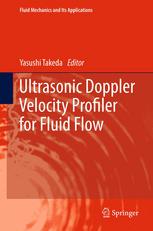

Most ebook files are in PDF format, so you can easily read them using various software such as Foxit Reader or directly on the Google Chrome browser.
Some ebook files are released by publishers in other formats such as .awz, .mobi, .epub, .fb2, etc. You may need to install specific software to read these formats on mobile/PC, such as Calibre.
Please read the tutorial at this link: https://ebookbell.com/faq
We offer FREE conversion to the popular formats you request; however, this may take some time. Therefore, right after payment, please email us, and we will try to provide the service as quickly as possible.
For some exceptional file formats or broken links (if any), please refrain from opening any disputes. Instead, email us first, and we will try to assist within a maximum of 6 hours.
EbookBell Team

5.0
38 reviewsThe ultrasonic velocity profile (UVP) method, first developed in medical engineering, is now widely used in clinical settings. The fluid mechanical basis of UVP was established in investigations by the author and his colleagues with work demonstrating that UVP is a powerful new tool in experimental fluid mechanics. There are diverse examples, ranging from problems in fundamental fluid dynamics to applied problems in mechanical, chemical, nuclear, and environmental engineering. In all these problems, the methodological principle in fluid mechanics was converted from point measurements to spatio-temporal measurements along a line. This book is the first monograph on UVP that offers comprehensive information about the method, its principles, its practice, and applied examples, and which serves both current and new users. Current users can confirm that their application configurations are correct, which will help them to improve the configurations so as to make them more efficient and effective. New users will become familiar with the method, to design applications on a physically correct basis for performing measurements accurately. Additionally, the appendix provides necessary practical information, such as acoustic properties.